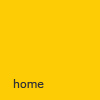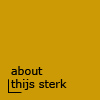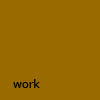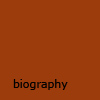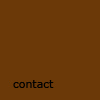|
I did not share this, but I did agree with him on his admiration for Desirée Scholten, especially her work "the Promised Land" (1967) which was exhibited in "Works in Textile 2 " in 1971.
It was the first important exhibition in which I also took part. Desirée Scholten's object inspired him to weave his own tapestry. After the style of Desirée Scholten he spun his wool and linen again to try and make a thicker, more uneven thread and he dyed it as long as he thought the color was right.
|
He could not get used to the iron hand in weaving, which means you have to have a plan in your mind. He added new warp threads across the woven parts and wove new parts in. He felt weaving techniques made it easier to think in an abstract way. The same water landscape (I think it was the "Gein") also exists as a painting.
When my father visited me in Hannover in 1979 he wanted to see the exhibition "Ewald Mataré und seine Schüler" in the museum of the "Kestner Gesellschaft". One of the "pupils" was Joseph Beuys, whom I then thought was a charlatan. My father did not know him and I was interested to hear what he thought of the vague scribbles. "Is this man still alive" was his first question. I explained that Beuys was famous in Germany and how he dealt with this. |
|
Het Gein z.j. olieverf op
doek 55 x 45 |
He reacted as follows: "A man who works this sensitively, may end up in the asylum or worse. Acting as a clown is the best solution." From Mataré he wanted to see his most recent work especially, which he thought had deteriorated: "How is it possible that a man who used to paint with such power had become so insecure as if he does not remember how to hold a brush."
|
